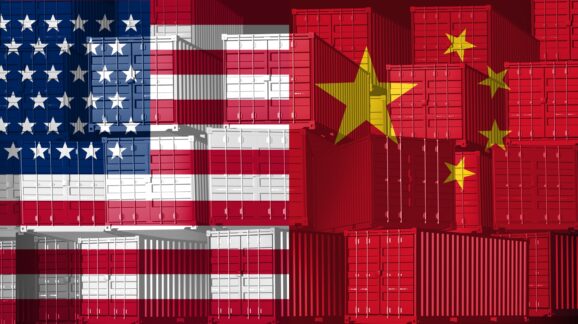Former Trade Official Opposes Minor Tariff Relief

Photo Credit: Getty
Now that former President Trump’s China tariffs are four years old, a mandatory review process is underway. President Biden has indicated he might lift tariffs on about 3 percent of the affected goods, or about $10 billion out of $370 billion total.
Former U.S. Trade Representative Robert Lighthizer has an op-ed in today’s Wall Street Journal urging President Biden to keep the tariffs in place. His case has three bad arguments and one good one.
First, Lighthizer argues that tariff relief would “hurt U.S. workers and businesses.” That is incorrect. The tariffs themselves hurt U.S. workers and businesses. They raise the prices of goods, on purpose. The tariffs have left companies scrambling to reroute supply networks they had been carefully building for decades. This left businesses more vulnerable than ever, right when COVID hit. The timing could not have been worse, and the tariffs are still contributing to supply chain woes today.
Moreover, U.S. businesses buy many of their raw materials and capital equipment from abroad. Making their inputs more expensive makes their outputs more expensive, too. Companies pass on their costs to consumers. And when consumers see prices go up, sales go down. That harms workers, as well as consumers.
Second is the old trade deficit shibboleth that economists since Adam Smith have knocked down over and over. Lighthizer has the same worry as old-timey mercantilists: that Americans are sending green pieces of paper abroad, while getting real goods in return. This is not a serious argument. There is a reason nobody tracks the trade deficit between, say, Ohio and Indiana.
Nearly everyone, including Lighthizer himself, runs a substantial trade deficit with his or her local grocery store, and is better off as a result. The grocery store wants 64 cents more than it wants a pound of bananas. Lighthizer wants those bananas more than he wants 64 cents. So they trade, and both are better off.
The trade deficit statistic is that mutually beneficial transaction aggregated across the economy. That’s why it doesn’t matter whether one side gets more currency or if one side gets more goods. Individuals make deals that they think will benefit them. It’s neat that accountants add it all up, but that’s about all it is. A clear view of trade requires acknowledging that countries do not trade with each other, individuals do.
Lighthizer’s third bad argument is the tariffs-as-leverage fallacy, which Lighthizer’s successor Katherine Tai also seems to buy into. The goal of the China tariffs was to spur Beijing to make needed reforms. Free traders and protectionists agree that the Chinese government is guilty of human rights abuses, unfair trade practices, expropriation, intellectual property theft, and espionage.
Four rounds of China tariffs resulted in not a single substantive reform from Beijing. It did result in four rounds of retaliatory tariffs that have harmed U.S. exports—adding to the trade deficit that Lighthizer is so concerned with. The Phase One agreement isn’t worth the paper it’s written on, and has spurred no serious reforms.
When you try something repeatedly and it doesn’t work, you should stop doing it. Lighthizer’s plea for continuing a failed policy is still more proof that politics is too detached from real life. Looking macho in a newspaper op-ed or a cable news hit is not a realistic China policy.
On the positive side of the ledger, Lighthizer is correct when he says that tariff relief will not address inflation. Inflation has to do with the amount of money in circulation, and tariffs do not. Tariff relief would lower prices on thousands of everyday goods such as clothing, food, and electronics. Still, scrapping the China tariffs would save the average household about $1,000 per year, forever. It will help people. President Biden should eliminate all of these tariffs.
Free trade boosts economic growth, which would help restore the imbalance between output and a runaway money supply, but the effect of tariff relief in a $25 trillion economy’s inflation rate wouldn’t be huge. Free trade advocates should not give protectionists like Lighthizer ammunition by overselling a case that is already overwhelming.
Inflation has a different cause than trade, and a different solution. The money supply grew by a third during the COVID-19 pandemic, while real output grew by about 5 percent, and might currently be shrinking. That imbalance is what causes inflation, and it is up to the Federal Reserve, not trade officials, to restore the balance.
Policy makers should certainly not intervene in any trade imbalance between Lighthizer and his grocer, or between Ohioans and Indianans, or between American individuals and Chinese individuals.
For more, see my paper on how to make tariff relief permanent, and Iain Murray’s and my paper “Traders of the Lost Ark.”